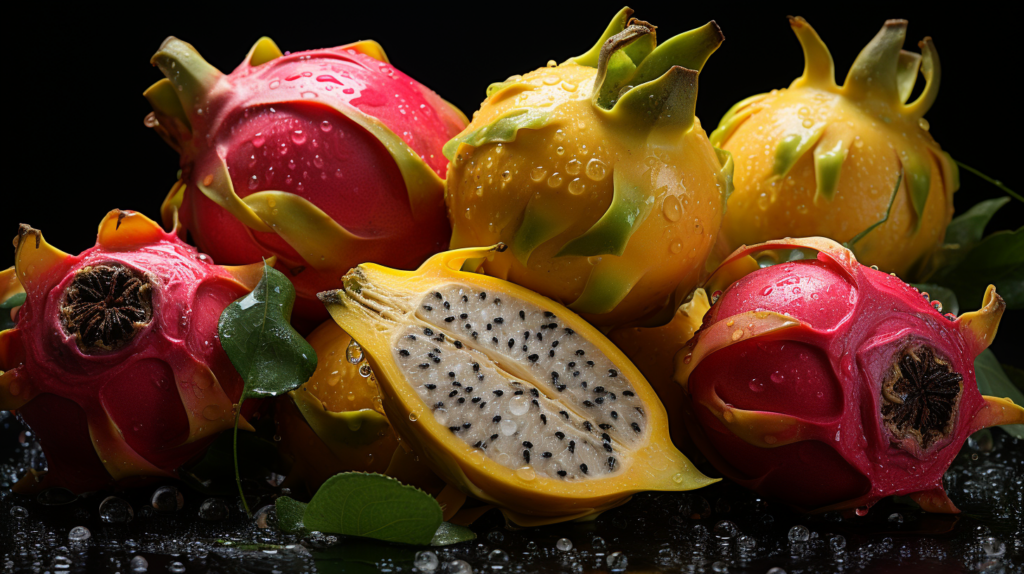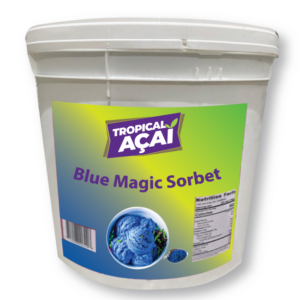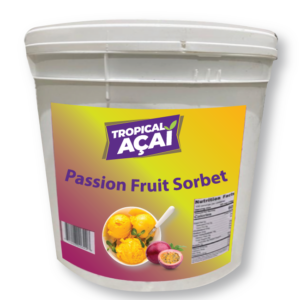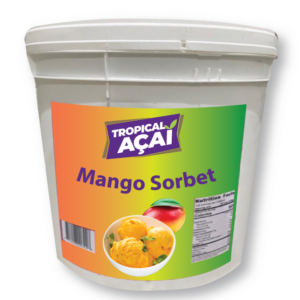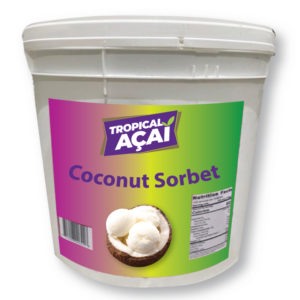Introduction: Unveiling the Secrets of Pitaya and Dragon Fruit
In the ever-expanding world of exotic and nutritious fruits, pitaya and dragon fruit stand out as two of the most intriguing options. These vibrant fruits are not just visually striking; they’re packed with health benefits, making them a sought-after addition to any diet. However, despite their popularity, there’s often confusion about what exactly sets these two fruits apart. This blog post aims to demystify pitaya and dragon fruit, shedding light on their unique qualities and benefits.
Pitaya vs Dragon Fruit: Unraveling the Confusion
“Pitaya” and “dragon fruit” are terms that often lead to a mix-up, yet there are subtle differences worth noting. Pitaya, primarily found in Southeast Asia, Central, and South America, refers to the fruit of several cactus species. Dragon fruit, on the other hand, is typically used to describe the fruit of the Hylocereus cactus, known for its striking red or yellow skin and speckled pulp. This section will explore these distinctions in depth, providing clarity on their individual characteristics, from appearance to nutritional content.
The Global Appeal of Exotic Fruits: A Trend Overview
Exotic fruits like pitaya and dragon fruit have captured the world’s attention not just as a trend but as a symbol of health and wellness. Their rise in popularity signifies a shift towards healthier, more diverse diets, with an increasing focus on the nutritional benefits of exotic fruits. We’ll delve into the reasons behind their global appeal, examining everything from their unique flavors to their health advantages.
Tropical Acai LLC: Your Trusted Partner in Exotic Fruit Supply
In the face of growing demand for exotic fruits, reliable and sustainable sourcing is paramount. Tropical Acai LLC emerges as a frontrunner in this space, offering high-quality, non-GMO organic pitaya and other exotic fruits. Known for its commitment to premium quality and adherence to stringent food safety standards, Tropical Acai LLC is the go-to partner for businesses around the globe. We’ll explore how Tropical Acai LLC stands out in the exotic fruit market, highlighting its practices, certifications, and its edge over competitors. Discover the finest in global fruit supply with our Organic Açaí Wholesale and Pitaya Wholesale offerings.
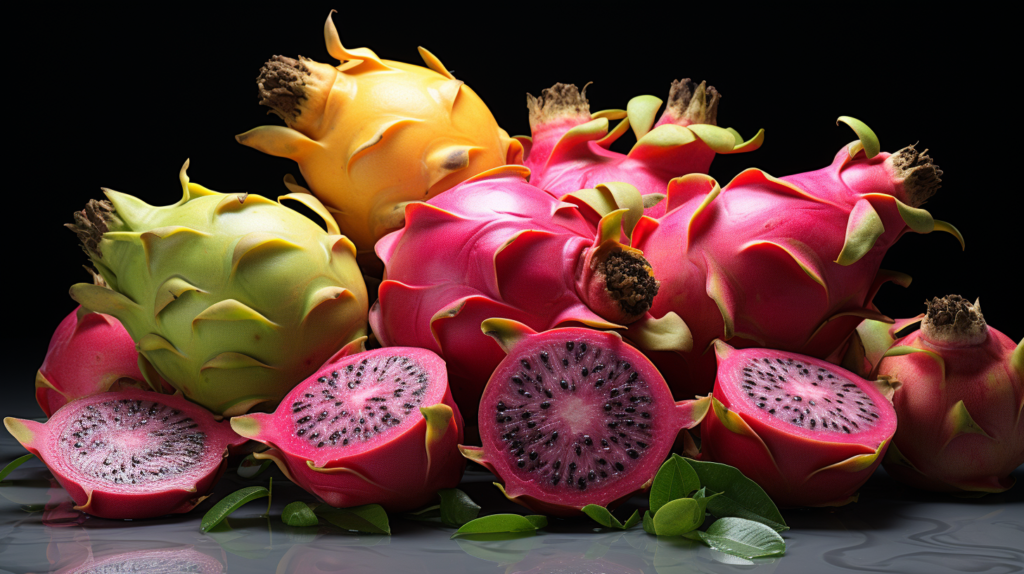
The Mystique of Pitaya: Exploring Its Origins and Varieties
Understanding Pitaya: A Comprehensive Guide
Pitaya, often cloaked in an aura of mystique, is more than just an exotic fruit; it’s a cultural and botanical wonder. Originating from various regions across Central and South America, pitaya has a rich history intertwined with the local traditions and cuisines of these areas. This fruit, belonging to several cactus species, is recognized for its striking appearance, featuring a range of colors from vibrant pinks to deep reds and even yellows. The texture and flavor of pitaya are equally remarkable, offering a taste that is both refreshingly sweet and subtly earthy.
Beyond its alluring visual appeal, pitaya’s journey from local farms to global markets is a story of agricultural success and innovation. Cultivated with care and expertise, pitaya has found its way into the hearts and diets of people worldwide. In this section, we’ll delve into the origins of pitaya, exploring its different varieties and the unique characteristics that each brings to the table. From the well-known red-fleshed varieties to the less common yellow-skinned types, each type of pitaya has its own story to tell.
Dragon Fruit Varieties: A Colorful Array
Dragon fruit, a term often used synonymously with pitaya, presents an array of varieties that are as diverse as they are colorful. The most common type encountered is the Hylocereus undatus, famed for its white flesh peppered with tiny black seeds and a vivid pink outer skin. Another popular variety is the Hylocereus costaricensis, notable for its deep red flesh, offering a slightly sweeter and more intense flavor profile. Then there’s the Hylocereus megalanthus, distinguished by its yellow skin and white flesh, providing a different taste and texture experience.
Each variety of dragon fruit not only differs in appearance and flavor but also in nutritional content. While all are rich in antioxidants, vitamins, and fiber, the subtle differences in their compositions make them unique in their health benefits. In this section, we’ll explore these varieties in depth, highlighting the distinguishing features of each. Whether it’s the antioxidant-rich red varieties or the vitamin C-packed yellow ones, understanding these differences is crucial for anyone looking to delve deeper into the world of dragon fruit.
The Journey from Farm to Table: Pitaya’s Path
The journey of pitaya from its native lands to tables around the world is a fascinating tale of agricultural expertise and global trade. Grown primarily in countries with tropical climates, pitaya requires specific conditions to thrive – a delicate balance of sunlight, temperature, and moisture. Farmers specializing in pitaya cultivation have honed their skills over generations, ensuring that each fruit is grown to its full potential, packed with flavor and nutrients.
Once harvested, pitaya embarks on its journey across continents, reaching markets and consumers eager to experience its exotic charm. This path is not just about transportation but also about maintaining the fruit’s quality and freshness. From careful harvesting techniques to state-of-the-art storage and shipping methods, every step is crucial in bringing this tropical delight to consumers worldwide. In this section, we’ll trace pitaya’s path from farm to table, uncovering the efforts and processes involved in making this exotic fruit available globally.

Nutritional Showdown: Pitaya vs Dragon Fruit
Breaking Down the Nutritional Content of Pitaya
Pitaya, often hailed as a superfood, is a powerhouse of nutrition, packed with a variety of vitamins, minerals, and antioxidants. Its low-calorie profile, combined with high fiber content, makes it an ideal choice for health-conscious individuals. Rich in vitamin C, pitaya helps in boosting the immune system, while its iron content aids in improving overall blood health. Additionally, the fruit is a good source of magnesium, essential for muscle and nerve function.
The antioxidants present in pitaya, such as betalains and hydroxycinnamates, play a critical role in combating oxidative stress and inflammation in the body. These compounds are also linked to various health benefits, including reduced risk of chronic diseases and improved skin health. In this section, we delve deeper into the nutritional makeup of pitaya, uncovering the myriad ways it contributes to a healthy diet.
Dragon Fruit’s Unique Health Benefits
Dragon fruit, while similar to pitaya in many aspects, offers its own set of unique health benefits. One of the most notable is its ability to aid in digestion, thanks to its high fiber content. This fiber not only helps in maintaining gut health but also assists in stabilizing blood sugar levels, making dragon fruit a suitable choice for those with diabetes. The fruit’s high level of antioxidants, particularly vitamin C and flavonoids, further enhances its health benefits, providing anti-inflammatory and immune-boosting properties.
Additionally, dragon fruit contains prebiotics, which are known to improve the balance of good bacteria in the gut, contributing to a healthy digestive system. The presence of carotenoids in dragon fruit, such as lycopene and beta-carotene, has been linked to reduced risk of cancer and other disease. This section will focus on the specific health benefits of dragon fruit, highlighting how it stands out as a nutritious addition to any diet.
Pitaya Benefits: Why It’s a Superfood
The term ‘superfood’ is often associated with pitaya, and for good reason. This exotic fruit not only offers a unique taste and visual appeal but also an impressive range of health benefits. Its high antioxidant content is crucial in fighting free radicals, thereby reducing the risk of chronic diseases. Pitaya is also beneficial for maintaining healthy skin, thanks to its vitamin C and carotenoid content, which aid in collagen production and protection against UV damage.
Moreover, pitaya is known for its positive effects on general health. The seeds of the fruit are rich in omega-3 and omega-6 fatty acids, which are essential for general health and reducing bad cholesterol levels. For those looking to maintain a healthy weight, pitaya’s low-calorie and high-fiber content make it an excellent dietary choice. In this section, we’ll explore in detail why pitaya is considered a superfood, focusing on its comprehensive health benefits and how it contributes to overall wellness.
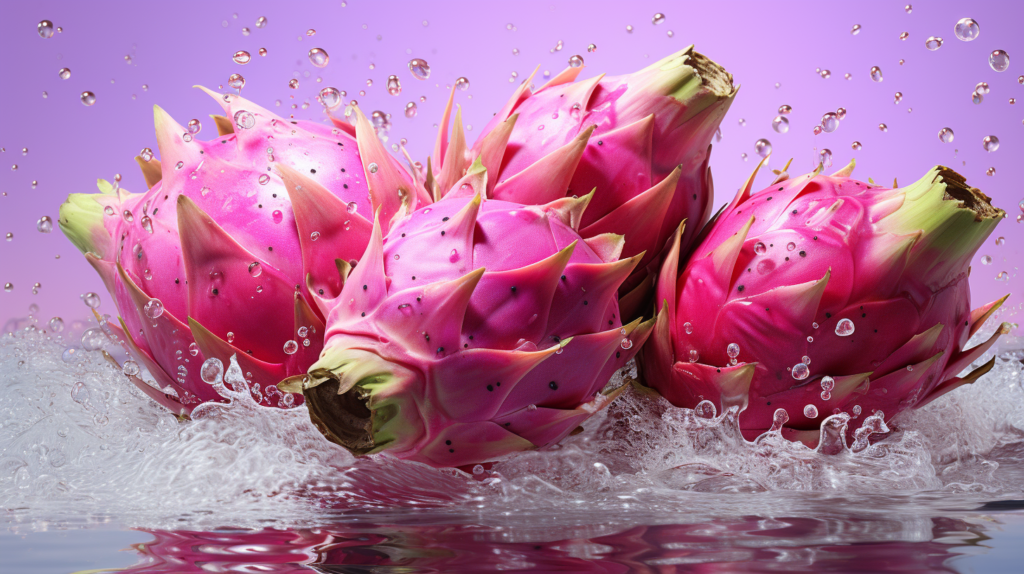
Culinary Adventures: Cooking with Pitaya and Dragon Fruit
Innovative Pitaya Recipes for Gourmet Kitchens
Pitaya, with its stunning appearance and unique taste, offers a world of culinary possibilities. Chefs and food enthusiasts are increasingly drawn to this exotic fruit for its ability to add a splash of color and a burst of flavor to any dish. The sweet, subtly earthy taste of pitaya makes it perfect for a range of recipes, from refreshing beverages and smoothies to innovative desserts and savory dishes.
In gourmet kitchens, pitaya is being transformed into culinary masterpieces. Imagine pitaya salsa adding a tropical twist to grilled fish, or pitaya sorbet serving as an eye-catching dessert. These recipes not only tantalize the taste buds but also provide a feast for the eyes, making them perfect for high-end culinary establishments aiming to impress. In this section, we will explore some of these creative recipes, showcasing the versatility of pitaya in gourmet cooking.

Dragon Fruit Delicacies: A Chef’s Guide
Dragon fruit’s unique flavor profile makes it a favorite ingredient for chefs looking to add an exotic touch to their dishes. Its versatility allows it to be seamlessly incorporated into a variety of recipes, whether sweet or savory. For example, dragon fruit cubes can add a surprising twist to a traditional fruit salad, or its puree can be used to create vibrant, flavorful sauces that complement both meat and seafood dishes.
This subsection is a guide for chefs and culinary enthusiasts, offering creative ways to incorporate dragon fruit into their menus. From dragon fruit ceviche to innovative desserts like dragon fruit panna cotta, we will provide a range of recipes that highlight the fruit’s potential in sophisticated cuisine. These recipes are designed not just to deliver unique flavors but also to create visually stunning dishes that can become the centerpiece of any dining experience.

Pairing Pitaya: Culinary Tips and Tricks
Successfully pairing pitaya with other ingredients can elevate a dish to new culinary heights. The fruit’s natural sweetness complements the tangy flavors of citrus fruits, creating a delightful balance in salads and desserts. On the savory side, pitaya can be paired with ingredients like jalapeño or cilantro for a refreshing contrast, ideal for salsas and garnishes.
This section offers practical tips for chefs on how to best utilize pitaya in their culinary creations. We’ll discuss flavor pairings that work well with pitaya, as well as preparation and presentation techniques that enhance the fruit’s natural beauty and taste. Whether it’s for a sweet treat or a savory dish, these tips will help chefs make the most of this exotic fruit’s unique qualities.
The Business of Exotic Fruits: Market Trends and Demand
Global Pitaya Distribution: A Growing Market
The global demand for pitaya is soaring, reflecting a broader trend in consumer preferences for exotic, nutritious fruits. This surge is particularly evident in diverse sectors such as culinary arts, retail, hospitality, and health and wellness. As health consciousness rises and palates become more adventurous, pitaya’s popularity continues to expand, opening new avenues for businesses to explore.
The unique appeal of pitaya, combining exotic flavor with a host of health benefits, positions it as a key player in the international fruit market. The growth in pitaya distribution offers lucrative opportunities for businesses to tap into this expanding market. Understanding the dynamics of global demand and supply can help businesses strategically integrate pitaya into their product offerings.

Dragon Fruit in Retail: Strategies for Supermarkets
In the retail landscape, supermarkets are instrumental in introducing dragon fruit to a wider consumer base. With the growing demand for healthier and more varied food choices, offering exotic fruits like dragon fruit can distinguish a supermarket from its competitors. However, successful integration of dragon fruit into retail requires more than just stocking the fruit; it demands strategic marketing and merchandising efforts.
This subsection focuses on effective strategies supermarkets can employ to enhance their exotic fruit offerings, with a specific emphasis on dragon fruit. Key approaches include creating attractive displays, educating consumers about the fruit’s nutritional and culinary value, and employing targeted marketing strategies. These tactics can significantly boost dragon fruit sales and enhance customer satisfaction and engagement.
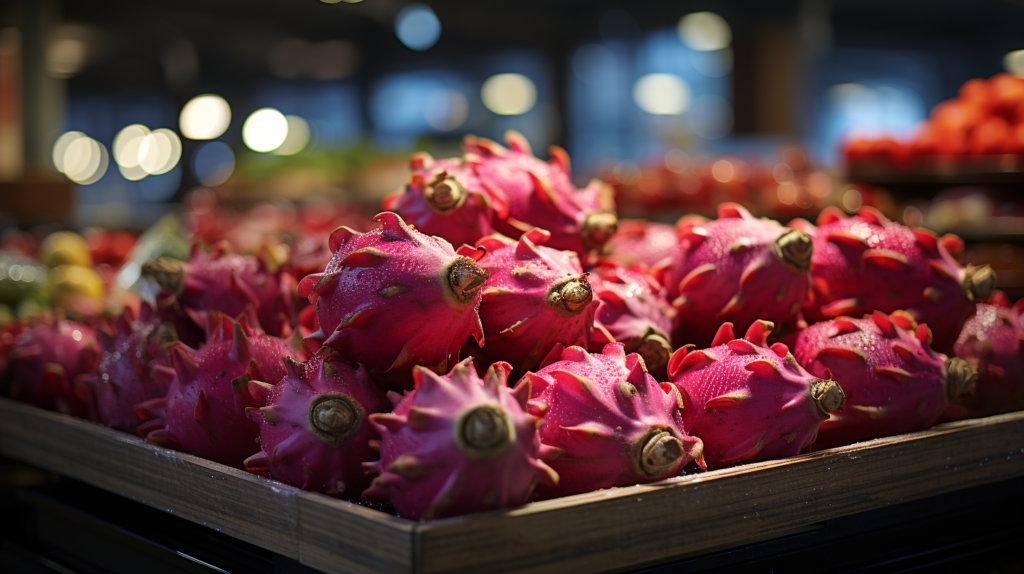
Tropical Acai LLC: Pioneering in Exotic Fruit Trade
Tropical Acai LLC has established itself as a frontrunner in the exotic fruit trade, particularly in the sourcing and distribution of premium pitaya and dragon fruit. Their expertise and commitment to quality have made them a go-to partner for businesses looking to source these exotic fruits.
Tropical Acai LLC is not just about providing quality products; it’s about delivering a comprehensive service that includes ensuring sustainable practices and a reliable global supply chain. Their extensive network and knowledge of the exotic fruit market offer significant advantages to businesses aiming to include exotic fruits in their product range.
Pitaya in Health and Wellness: A Deep Dive
Exotic Fruit Nutrition: Beyond the Basics
Pitaya, renowned for its vivid hues and unique flavor, is also a treasure trove of nutritional benefits. Packed with vitamins, minerals, and antioxidants, it’s an ideal fruit for those seeking a healthy lifestyle. Its high fiber content aids digestion and promotes a feeling of fullness, making it a favorite among weight-conscious individuals. Additionally, the antioxidants in pitaya, such as betalains, are known for their anti-inflammatory properties, making the fruit a valuable addition to any health-focused diet.
The fruit’s low calorie count, coupled with its nutrient density, makes it an excellent choice for anyone looking to enrich their diet without adding extra calories. Incorporating pitaya into daily meals can enhance overall health, from boosting the immune system to improving skin quality, thanks to its vitamin C and carotenoid content.

Dragon Fruit’s Role in Modern Diets
Dragon fruit is increasingly becoming a staple in modern diets, cherished for its balance of taste and health benefits. Its compatibility with various dietary needs, from vegan and vegetarian to gluten-free and low-carb diets, makes it a versatile fruit for diverse consumer groups. The low sugar content of dragon fruit is particularly appealing to those monitoring their glycemic index, including individuals with diabetes.
Incorporating dragon fruit into daily diets is not just about enjoying a delicious fruit; it’s about embracing a food that contributes positively to overall health. Its rich nutrient profile supports various bodily functions, from aiding digestion with its fiber content to boosting immunity with its high vitamin C levels.
Integrating Pitaya in Health-Conscious Menus
For those looking to make healthier dietary choices, pitaya is an excellent fruit to incorporate into their meals. Its distinct flavor and stunning color make it a delightful addition to various dishes, enhancing both their visual appeal and nutritional value. From vibrant breakfast bowls and smoothies to nutritious snacks and entrées, pitaya adds a burst of health and flavor.
This section offers practical suggestions for including pitaya in daily diets. It provides insights into creating delicious, health-conscious dishes that are not only nutritious but also visually appealing. These ideas aim to inspire readers to use pitaya in innovative ways, making healthy eating both enjoyable and aesthetically pleasing.
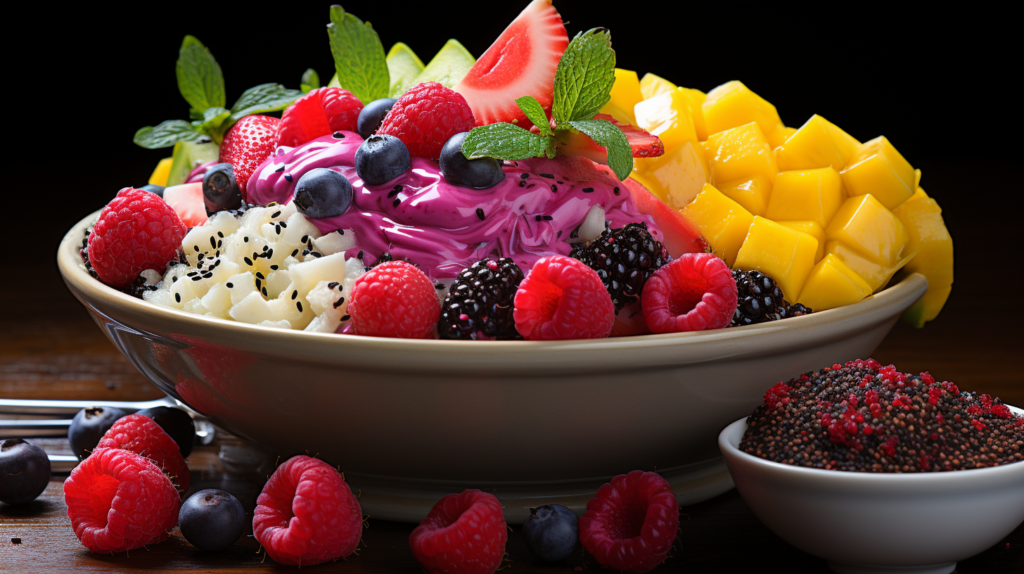
Pitaya Farming: Sustainable Practices and Challenges
Dragon Fruit Cultivation: An Agronomist’s Perspective
Dragon fruit cultivation, a blend of art and science, requires specific agronomic expertise. Thriving in tropical and subtropical climates, these plants demand precise care, including optimal sunlight, temperature, and moisture management. Agronomists and farmers specializing in dragon fruit have developed sophisticated techniques to maximize growth and yield. These methods include the careful selection of varieties, precision irrigation, and effective pest control, ensuring that each fruit reaches its full potential in both flavor and nutrition.
The agronomy of dragon fruit is as complex as it is fascinating. From understanding the plant’s unique growth cycle and soil needs to mastering the art of harvesting, every aspect is crucial for high-quality produce. This detailed exploration into dragon fruit cultivation reveals the intricate practices and challenges faced by those dedicated to growing this exotic fruit.
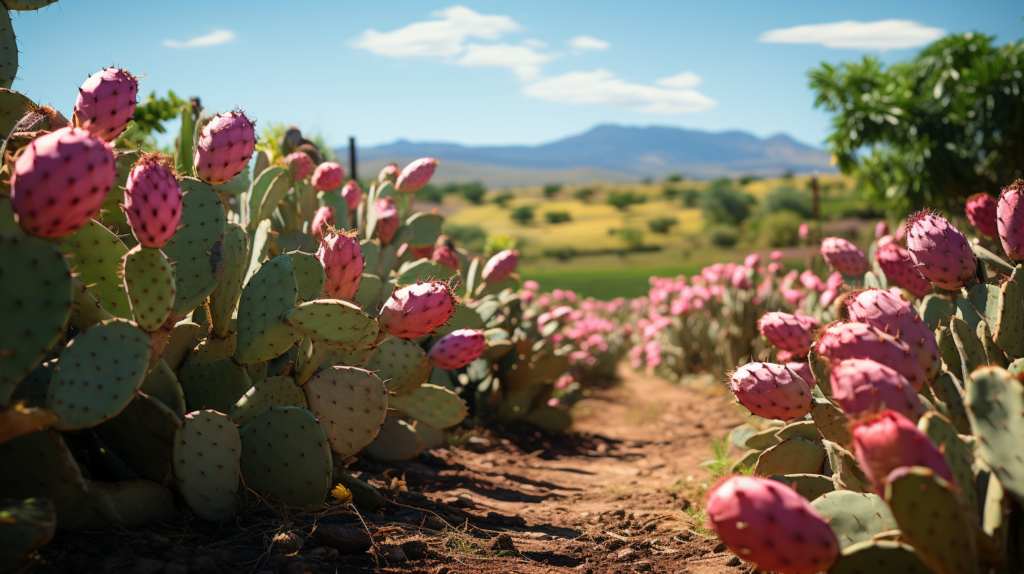
Ensuring Sustainability in Pitaya Production
The pursuit of sustainability in pitaya production is essential in today’s environmentally conscious market. As demand grows, so does the responsibility to employ eco-friendly and ethical farming practices. Sustainable pitaya farming involves a holistic approach, focusing on the conservation of natural resources, the implementation of organic pest control, and ensuring fair labor practices.
Farmers are increasingly adopting innovative methods to minimize their environmental footprint while maintaining crop quality and yield. These practices are not only beneficial for the health of our planet but are also key to the long-term success and viability of the pitaya industry. The shift towards sustainable farming reflects a commitment to both environmental stewardship and the production of high-quality, ethical produce.
The Role of Certifications in Pitaya Farming
Certifications play a crucial role in the pitaya farming industry, serving as indicators of quality and sustainability. These certifications, which include organic, non-GMO, and various food safety accreditations, provide consumers with the assurance that they are purchasing ethically and healthfully produced fruit. For farmers, achieving these certifications is a significant accomplishment, reflecting their adherence to rigorous agricultural standards.
Certifications are instrumental in building consumer trust and ensuring the marketability of pitaya. They act as a bridge between conscientious producers and informed consumers, guaranteeing that the highest standards of quality and ethical farming are upheld in the pitaya industry.
Incorporating Pitaya in Hotel and Restaurant Offerings
Elevating Menus with Dragon Fruit
Dragon fruit’s exotic allure makes it a prized ingredient for hotels and restaurants seeking to elevate their menu offerings. This striking fruit not only brings a splash of color to the plate but also infuses dishes with its subtly sweet flavor. Its versatility allows chefs to experiment with a range of culinary creations, from vibrant breakfast bowls and refreshing beverages to sophisticated desserts and savory pairings.
In fine dining, dragon fruit can become the centerpiece of a dish, captivating diners with its unique appearance and taste. Innovative chefs are crafting dishes like dragon fruit carpaccio, pitaya-infused sauces for meats and seafood, and eye-catching desserts that showcase the fruit’s natural beauty. These creations not only enhance the dining experience but also reflect a commitment to offering novel and health-conscious options.

Tropical Acai Partnership: A Win-Win for Hotels
For hotels looking to distinguish their culinary offerings, partnering with Tropical Acai LLC presents a valuable opportunity. Their supply of high-quality, organic dragon fruit ensures that hotels can consistently delight their guests with premium exotic fruit options. This partnership extends beyond product delivery; it’s about joining a network dedicated to excellence in quality and service.
Hotels collaborating with Tropical Acai LLC benefit from a steady supply of fresh, top-tier pitaya, enabling them to incorporate this exotic fruit into various culinary offerings. Whether for special menu items, catering events, or as part of their standard fare, hotels can leverage this partnership to enhance their reputation for quality and innovation in dining.

Unique Pitaya Dishes to Attract Diners
Restaurants can draw in diners with the allure of unique pitaya-based dishes. These creations are not just a treat for the palate but also a visual delight, making them highly appealing to customers seeking new and exciting dining experiences. From starters and salads to main courses and desserts, pitaya’s versatility allows for a wide array of culinary innovations.
Offering dishes like pitaya-stuffed chicken, dragon fruit salsa with artisanal chips, or pitaya sorbet can set a restaurant apart in a competitive culinary landscape. These dishes not only cater to the growing interest in exotic fruits but also demonstrate a commitment to creative and health-conscious cuisine.
Pitaya for Frozen Storage and Acai Bowl Shops
Maximizing Shelf Life: Tips for Frozen Pitaya
Frozen pitaya is an excellent option for businesses like acai bowl shops, smoothie bars, and restaurants, offering a way to extend the shelf life of this exotic fruit without compromising its nutritional value. Proper freezing techniques are crucial to maintain the fruit’s texture, flavor, and color. Selecting ripe, high-quality pitaya is the first step in the freezing process. Cutting the fruit into manageable sizes and using appropriate freezing methods helps preserve its quality, making it ideal for later use in various dishes and beverages.
This section provides essential tips on selecting, preparing, and freezing pitaya to ensure optimal quality. Businesses that rely on frozen fruit can benefit greatly from these practices, ensuring they always have a supply of pitaya on hand for their unique offerings.
Creating Signature Acai Bowls with Dragon Fruit
Acai bowls have become a popular menu item in many health-focused eateries, known for their delicious taste and nutritional benefits. Incorporating dragon fruit into these bowls can elevate them to a new level of appeal, adding vibrant color and a burst of tropical flavor. Dragon fruit can be used as a topping, adding a fresh, juicy component, or blended into the acai base for an extra flavor dimension.
This section explores innovative ways to integrate dragon fruit into acai bowls, providing recipes and presentation ideas. Acai bowl shops can use these tips to create visually stunning and delicious bowls that not only taste great but are also highly Instagrammable, attracting a wider customer base.
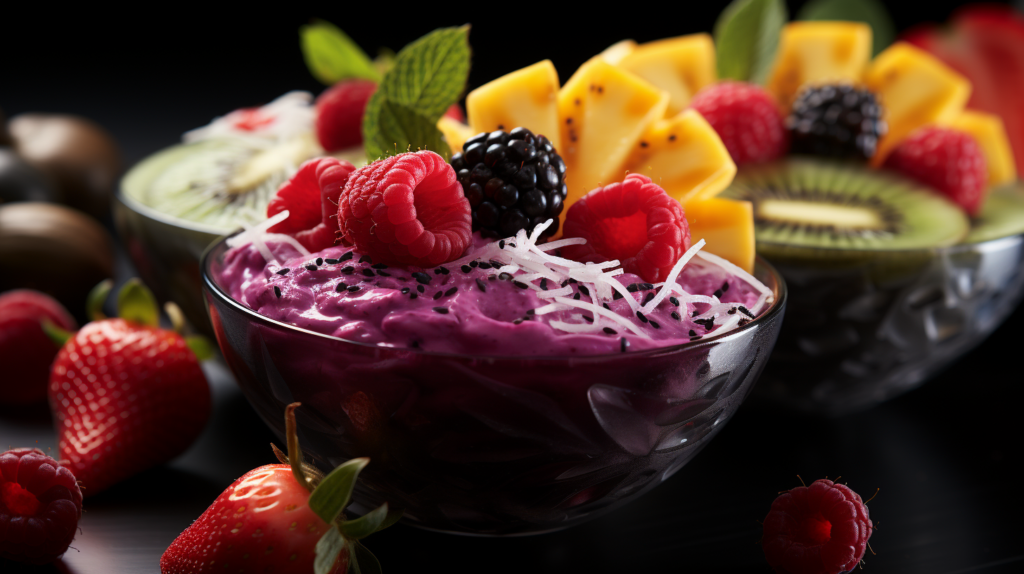
Smoothie Shops: Blending Pitaya for Success
For smoothie shops, adding pitaya to the menu can offer a unique selling point, attracting customers with its distinct flavor and health benefits. Pitaya blends well with a variety of ingredients, allowing for a range of smoothie creations, from sweet and fruity to rich and creamy. Its vibrant color also makes for visually appealing drinks, an important factor in attracting health-conscious and social media-savvy customers.
In this section, we provide insights into effective blending techniques and flavor pairings for pitaya smoothies. Smoothie shops can use these ideas to create standout beverages that are not only nutritious but also delicious and aesthetically pleasing, encouraging repeat business and customer loyalty.

Retail Strategies: Selling Pitaya in Supermarkets
Merchandising Exotic Fruits: A Retail Guide
Successfully merchandising exotic fruits like pitaya in supermarkets requires strategic planning and execution. Attracting customers to try new and unusual fruits involves creating eye-catching displays and providing informative content. Properly displayed, pitaya can become a focal point in the produce section, drawing in customers with its vibrant colors and intriguing appearance. Informative signage that highlights the fruit’s origin, taste, and health benefits can further pique customer interest and encourage purchases.
Supermarkets can also host tasting events or provide recipe ideas to help customers understand how to use pitaya in their own kitchens. These strategies not only boost sales but also enhance the shopping experience, making it more engaging and educational for consumers.
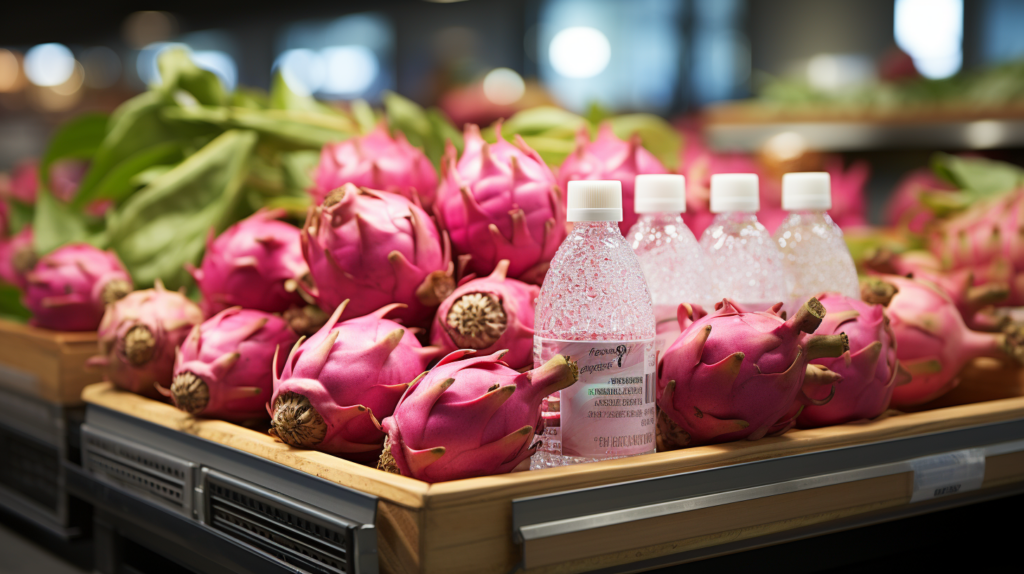
Dragon Fruit as a Supermarket Star
Dragon fruit’s unique appearance and health benefits make it a standout item in the produce section of supermarkets. Positioning dragon fruit as a premium product involves more than just stocking it on shelves; it requires strategic marketing and promotion. Supermarkets can leverage dragon fruit’s exotic appeal through targeted advertising campaigns and in-store promotions.
Highlighting dragon fruit in weekly flyers, using it in cross-merchandising with other healthy products, or featuring it in store-sponsored health and wellness events are effective ways to increase its visibility and appeal. These efforts not only drive sales but also position the supermarket as a destination for unique and healthy produce choices.
Leveraging Tropical Acai LLC’s Expertise in Retail
Partnering with Tropical Acai LLC offers supermarkets a distinct advantage in the exotic fruit market. Their expertise in sourcing and distributing high-quality pitaya ensures that supermarkets have access to the freshest and most flavorful fruit. Furthermore, Tropical Acai LLC‘s commitment to sustainability and ethical sourcing aligns with the values of many modern consumers, adding value to the supermarket’s brand.
Through collaboration with Tropical Acai LLC, supermarkets can benefit from tailored supply solutions, marketing support, and insights into consumer trends. This partnership allows supermarkets to confidently expand their exotic fruit offerings, knowing they are backed by the expertise and quality assurance of a trusted leader in the industry.

Pitaya vs Dragon Fruit: Addressing Common Misconceptions
Debunking Myths: Pitaya vs Dragon Fruit Facts
Numerous myths surround pitaya and dragon fruit, often leading to consumer confusion. One common misconception is the belief that they are entirely distinct fruits when dragon fruit is actually a type of pitaya. Addressing this confusion is essential for consumers to understand their nutritional and culinary differences. Another widespread myth is that all dragon fruits have white flesh, which neglects the varieties with red and yellow flesh, each offering unique flavors and health benefits.
Correcting these misconceptions is key to educating consumers, enabling them to make informed decisions. With accurate information, consumers can better appreciate the diversity of these fruits, their nutritional profiles, and their versatility in various dishes.
Consumer Education: Enhancing Fruit Knowledge
Educating consumers about pitaya and dragon fruit extends beyond debunking myths. It involves offering comprehensive insights into their health benefits, nutritional content, and culinary uses. Providing this information helps consumers understand the growing popularity of these fruits and how to incorporate them into their diets. Educated consumers are more likely to explore diverse and health-conscious eating habits.
Informing consumers about the proper selection, storage, and preparation of these fruits can also enhance their overall experience. Sharing knowledge about selecting ripe fruits, optimal storage techniques, and preparation methods ensures consumers enjoy these fruits at their best.
Global Distribution: Tropical Acai LLC’s Edge
Navigating International Pitaya Trade
Tropical Acai LLC is adept at navigating the complexities of international pitaya trade, ensuring the fruit maintains its quality and freshness. Managing global logistics involves understanding diverse regulatory requirements and maintaining consistent quality controls. Their expertise in these areas makes them a reliable partner in the exotic fruit market, capable of delivering high-quality pitaya to various international destinations.
The company’s proficiency in handling trade logistics, including compliance with diverse international standards, reinforces their position as an industry leader. Their commitment to quality in global distribution ensures that clients around the world receive the best pitaya available.

Tropical Acai’s Commitment to Quality and Safety
Tropical Acai LLC is deeply committed to quality and safety in every aspect of their operations. This commitment is evident in their rigorous approach to sourcing, quality control, and adherence to food safety standards. Their dedication to providing premium quality pitaya is a testament to their role as a leader in the exotic fruit market.
Their approach extends beyond product delivery, encompassing sustainable and ethical business practices. This comprehensive approach benefits not only their clients but also sets an industry benchmark for quality and responsibility in the exotic fruit sector.
Conclusion: Embracing the Future of Pitaya and Dragon Fruit
The Growing Influence of Exotic Fruits in Global Cuisine
The rise of exotic fruits like pitaya and dragon fruit in global cuisine marks a significant shift towards more adventurous and health-conscious eating habits. These fruits, with their vibrant colors, unique flavors, and nutritional benefits, are becoming increasingly popular in various culinary contexts. From high-end restaurants to casual dining, pitaya and dragon fruit are being celebrated for their versatility and appeal, catering to a growing consumer interest in diverse and wholesome food choices.
This trend reflects a broader movement towards integrating more exotic and nutritionally rich ingredients into everyday diets. As consumers become more informed about the health benefits and culinary potentials of these fruits, their demand is set to increase further, making them a staple in kitchens around the world.
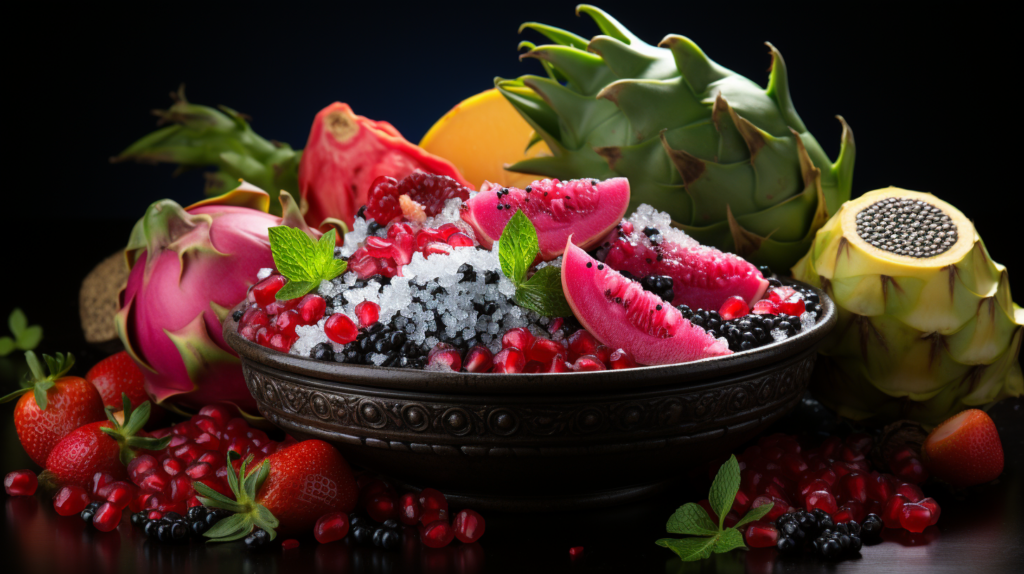
Tropical Acai LLC: Leading the Way in Exotic Fruit Supply
Tropical Acai LLC has positioned itself at the forefront of this trend, offering a reliable source of high-quality, organic pitaya and dragon fruit. Their commitment to sustainability, quality, and customer satisfaction makes them a preferred partner for businesses looking to tap into the growing market for exotic fruits. With a focus on ethical sourcing and global distribution, Tropical Acai LLC is not just meeting the current demand but is also shaping the future of the exotic fruit industry.
The company’s role extends beyond being a supplier; it is a catalyst in promoting the consumption of healthy, exotic fruits. By providing top-tier products and sharing their expertise, Tropical Acai LLC is helping to broaden the horizons of culinary experiences worldwide, making exotic fruits more accessible to a diverse range of consumers.
FAQs: Answering Your Pitaya and Dragon Fruit Queries
What Makes Pitaya Different from Dragon Fruit?
Pitaya and dragon fruit are often used interchangeably, but understanding their distinctions can enhance your appreciation and use of these fruits. While dragon fruit specifically refers to the fruit of the Hylocereus cactus, pitaya encompasses a broader category of fruits from several cactus species. This FAQ addresses the nuances between them, helping consumers and culinary professionals alike in identifying and utilizing these fruits effectively.
How Can Hotels Benefit from Offering Pitaya?
For hotels, incorporating pitaya into their menus and offerings can significantly enhance their dining appeal and guest experience. This FAQ explores the various ways in which hotels can use pitaya to create unique and memorable culinary experiences, from breakfast offerings to specialty desserts and cocktails.
Why Should Supermarkets Partner with Tropical Acai LLC?
Supermarkets partnering with Tropical Acai LLC gain access to a consistent supply of high-quality, organic pitaya and dragon fruit. This FAQ delves into the benefits of such a partnership, including enhanced product variety, quality assurance, and the potential to attract health-conscious consumers seeking exotic fruit options.
What Are the Health Benefits of Pitaya and Dragon Fruit?
Pitaya and dragon fruit are celebrated not just for their exotic flavors but also for their numerous health benefits. Rich in antioxidants, vitamins, and dietary fiber, these fruits offer a range of advantages, from aiding digestion to boosting the immune system. This FAQ provides a comprehensive overview of the nutritional benefits of pitaya and dragon fruit, emphasizing why they are considered superfoods in modern diets.
How Does Tropical Acai LLC Ensure the Quality of Pitaya?
Ensuring the highest quality of pitaya is a cornerstone of Tropical Acai LLC‘s operations. This FAQ discusses the company’s meticulous process of selecting, harvesting, and distributing pitaya. From working closely with farmers to employing rigorous quality control measures, Tropical Acai LLC‘s commitment to excellence is detailed, ensuring that only the best fruit reaches their customers.
Can Dragon Fruit Be Stored in Frozen Conditions?
Dragon fruit can be effectively stored in frozen conditions, which helps in extending its shelf life without compromising its nutritional value. This FAQ offers insights into the best practices for freezing dragon fruit, including tips on preparation and storage techniques to maintain its quality and flavor.
What Makes Tropical Acai LLC Different from Other Distributors?
Tropical Acai LLC distinguishes itself from other distributors through its unwavering commitment to quality, sustainability, and customer satisfaction. This FAQ highlights the unique aspects of Tropical Acai LLC, including their global network, ethical sourcing practices, and dedication to providing premium, organic pitaya and dragon fruit.
How Can Pitaya Enhance Acai Bowl and Smoothie Offerings?
Incorporating pitaya into acai bowls and smoothies can significantly enhance these offerings, both in terms of nutritional value and visual appeal. This FAQ explores the versatility of pitaya in these applications, providing ideas and tips for creating vibrant, healthful, and delicious acai bowls and smoothies.
What Are the Global Markets for Pitaya Distribution?
The global markets for pitaya distribution are expanding, with increasing demand in regions such as North America, Europe, and Asia. This FAQ examines the current trends and potential in the global distribution of pitaya, outlining the opportunities and challenges in different markets.
Are There Any Special Certifications for Pitaya Farming?
Certifications in pitaya farming, such as organic, non-GMO, and fair trade, play a significant role in ensuring the quality and sustainability of the produce. This FAQ addresses the various certifications applicable to pitaya farming, explaining their importance and the process of obtaining them.

